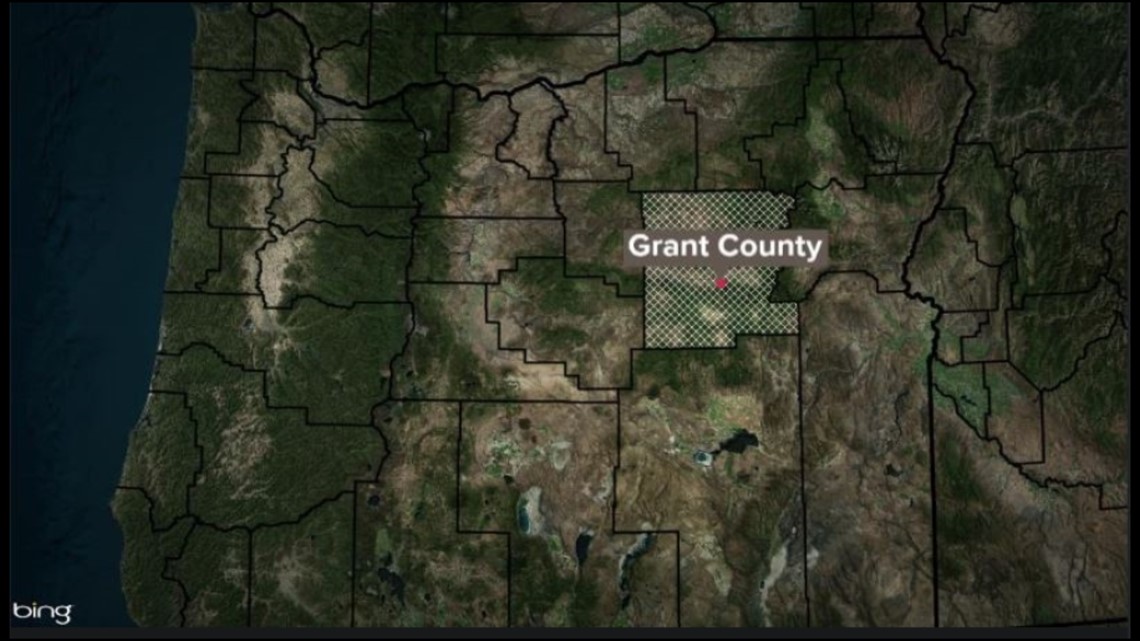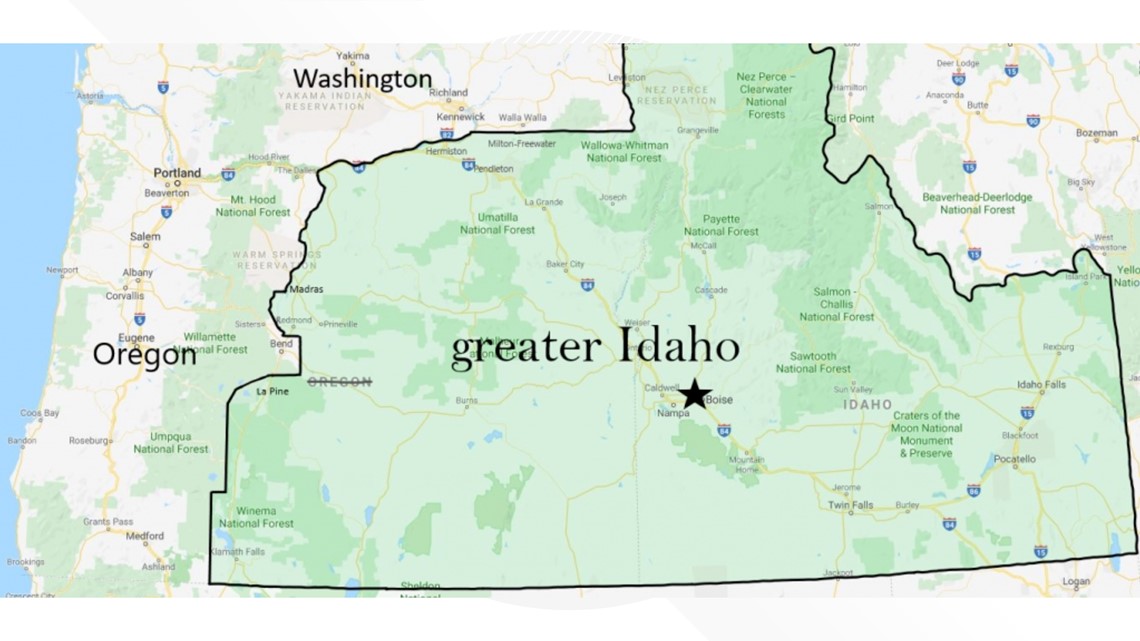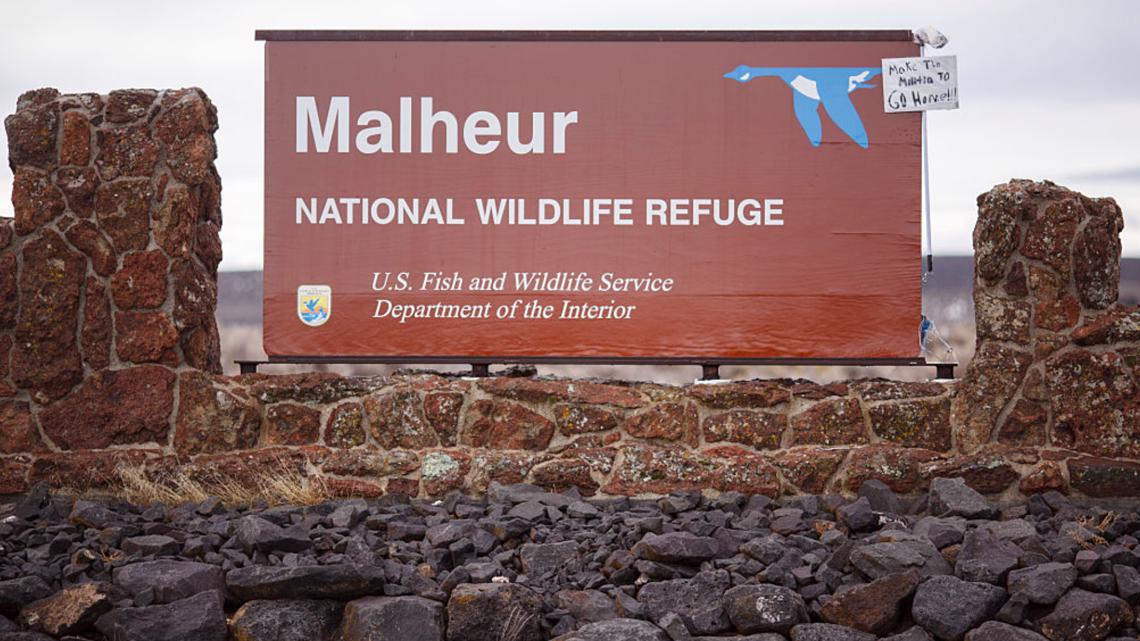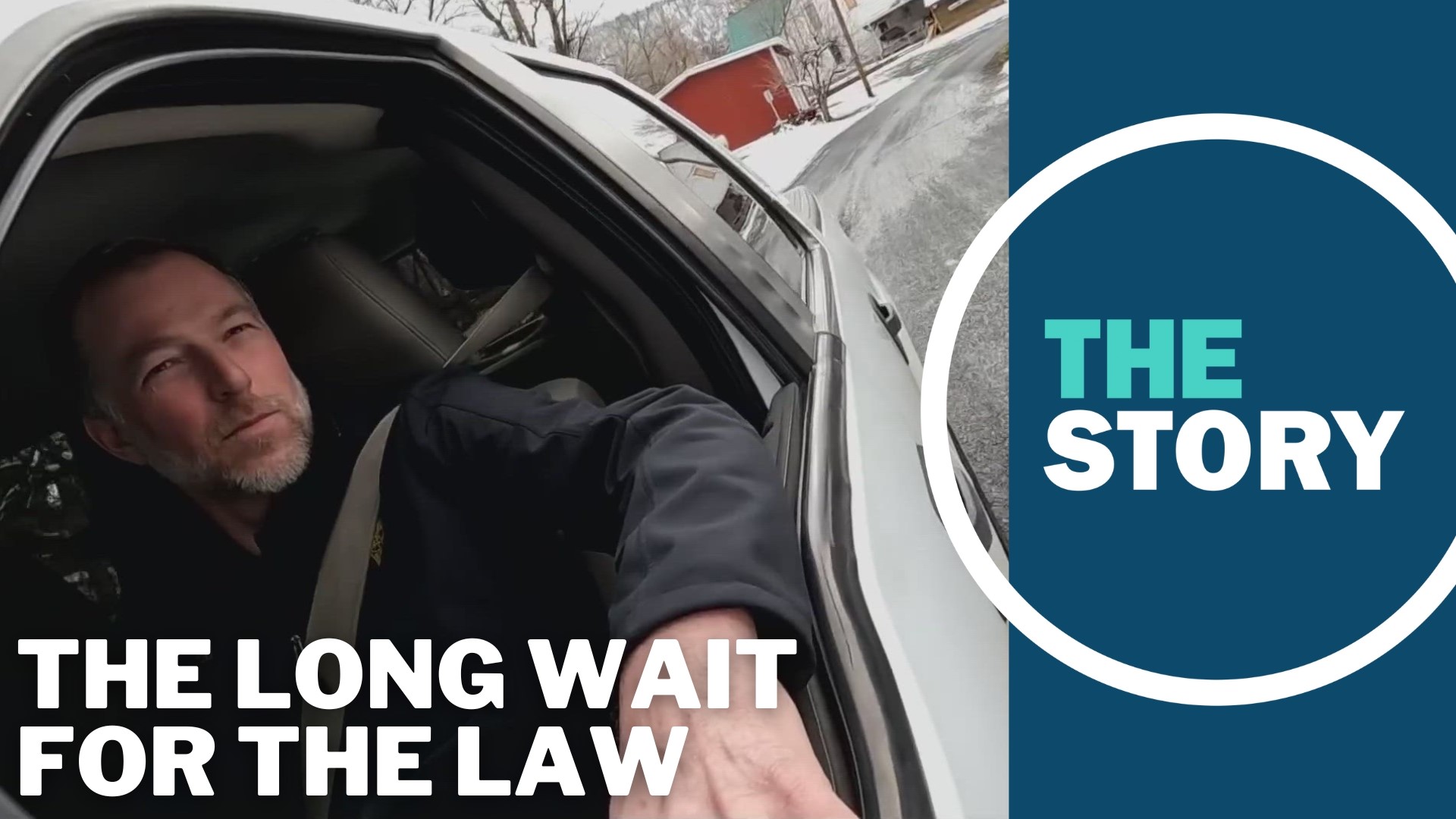CANYON CITY, Ore. — In many parts of eastern Oregon, there are likely more cows than people — it's that rural. According to the U.S. Census Bureau, there are roughly 1.6 people for every square mile of land.
There are far fewer law enforcement officers than in western Oregon counties. It's sometimes more akin to the historic American West, where people say they are independent and protect themselves without the help of police or sheriff's deputies.
"People need to be able to defend themselves, and I expect them to out here," said Grant County Sheriff Todd McKinley.
McKinley became sheriff of Grant County in 2021. He's lived in rural Oregon since the late '70s and started working in law enforcement in the late '90s.
Grant County is big and sparsely populated, with a tiny sheriff's office. As a result, it can take McKinley and his deputies quite a while in responding to calls, depending on where they're coming from.
"I have driven my patrol car a hundred miles an hour, for an hour, and stayed inside the county to get to a call," he said.
If there's a violent incident somewhere in the county, McKinley said, "It's gonna be over long before we get there ... and hopefully the right side has prevailed."


That's one reason that the sheriff and many of his constituents on this side of Oregon are frustrated with the passage of Measure 114. The gun control law would limit the legal capacity of new gun magazines and require prospective gun owners to take a class and get a permit first. The law is currently frozen in an eastern Oregon court as opponents argue against its constitutionality.
Sheriff McKinley has little patience for the law, which would require his office to handle the permitting process.
"I don't have the staffing," he said. "It's just not practical. It is not. It's an unfunded mandate and I don't know how we expect the local taxpayers to come up with that, and then it's gonna deprive them of their constitutional right of owning a firearm if I cannot get that program up and running. And it has to be in the county that you reside."
According to the Oregon Secretary of State's office, Measure 114 failed miserably in Grant County — voted down 3,471 to 654. But in Multnomah County, where the largest population in Oregon resides and where the effort to pass Measure 114 began, it passed by a landslide: 266,862 yes votes to 93,392 no votes. That helped the measure get across the finish line.
To hear them tell it, this is what many rural residents mean when they say the west side and the big cities control the state of Oregon.


Between a rock and a hard place
On the plateau that overlooks the Grant County city of John Day, it feels like you can see for a hundred miles. There are no tall buildings, no traffic congestion. Everything about the environment looks different than it does in Portland — and many of the eastern Oregonians who talked to KGW wonder why the rules they live under have to look the same as they do in Portland.
The sentiment has been building for decades, but it more recently gave birth to the "Greater Idaho" movement, which pledges to do something about it.
Thus far, 11 eastern Oregon counties have voted to consider moving the Oregon border so that they would become part of Idaho, living under its more conservative laws and values.
The new border, as envisioned by the movement's "Phase 1" plan, would cover a total of 15 counties — just about everything east of the Cascades, minus Bend and The Dalles.


It's unlikely that the movement will succeed, but its popularity in eastern Oregon is evidence that many in these rural communities are deeply angry, convinced that Oregon will never recognize or honor their values.
Sheriff McKinley counts himself as still being on the fence about "Greater Idaho."
"I still don't know," he said. "The jury is out on that ... I think I'm fairly informed on it, but I don't know if I would be part of a better thing or we'd end up right back where we are."
One of his concerns, like those voiced by a John Day business owner, is that Idaho's political demographics will change over time just like Oregon's have.
"Is Idaho gonna change with Boise and we be right back in the same place we already are perceived to be?" McKinley mused. "And will they want to get rid of us at some point? You know, it was a bad take, or are we gonna want to get rid of them? I just don't know if it's gonna be best for both of us."
But the sheriff is just as frustrated as anyone out east over the statewide laws passed by voters in urban areas that impact life out here. He cited Measure 110, for example, which decriminalized user amounts of drugs and allocated funding for drug treatment outreach.
When Measure 110 came up for a vote in 2020, Grant County voted it down on a 2,811 to 1,626 vote. However in Multnomah County, where the measure began, it passed easily: 333,042 yes votes to 115,034 no votes.
"My side of the view on 110, and I've voiced my opinion before — it's an epic failure," McKinley said. "Measure 110 has, from my observations and who we're working with and dealing with, it has not been beneficial."
Like many others in law enforcement, Sheriff McKinley is frustrated that the measure is all carrot and no stick — that there are no consequences now for drug use that can be effectively leveraged as an incentive for users to stop.
McKinley thinks there are more drugs in Grant County as a result, and probably more users.
"Hard to quantify, but I believe (from) what I see out there that's accurate," he said. "And I think one of the outtakes of that is our mental health calls that we're getting — also drug-induced psychosis, different drug-related issues that are affecting the mental health, and we're seeing more and more of that. And it's hard for the treatment provider to help them if they show up at the hospital and they're under the influence because they need to be sober for them to be able to help them.
"And now the tool of getting them into jail on a crime for the possession and actually using that as the stepping stone to get them to get help is gone. I can't even have 'em here, get 'em sobered up, they go see a treatment provider, sober, and usually they do that while they're in custody — that's ended."
Grant County then runs into many of the same problems with severe mental health symptoms as anywhere else in Oregon. For people who are psychotic or otherwise unfit for jail or trial, there's no room at the distant Oregon State Hospital to take them — at least not promptly, and not for long.
"It ends up being a revolving door," McKinley said. "And we're trying to find beds for people and spending hours of our time sitting with them because they're, they're completely out of their minds, trying to get them secure 'til they get to a facility ... and it's just, it's just a complete waste of time."
A recipe for extremism
There are probably people in Oregon's urban communities who think that ignoring the complaints of rural residents is fine and correct, but the state's former U.S. Attorney disagrees — to him, it's a danger.
"I grew up in rural settings in Washington and Idaho and I get it," said Billy J. Williams. "I understand why there's this anti-federal government sentiment."
Williams was the top federal law enforcement officer for the state of Oregon from 2015 to 2021. He dealt with the takeover of the Malheur National Wildlife Refuge by Ammon Bundy and his anti-government followers in January of 2016. It happened right next door to Grant County.
The rural complaints that some people write off as petty can fester, becoming fertile breeding ground for anti-government groups like these.
"It absolutely does," Williams said. "And you know, look — the Bundys and their followers and other far-right extremists love these opportunities, because that's where they inject themselves."
Ammon Bundy and dozens of armed occupiers took over the Malheur refuge and held it for most of January 2016 in protest against the federal government. On January 26, as Bundy and his posse drove to a meeting in Grant County, law enforcement swooped in. Police took Bundy into custody and fatally shot a member of his group, Lavoy Finnicum, during a confrontation.


Bundy and Finnicum had planned to meet with the then-Grant County Sheriff, Glenn Palmer.
For Williams, the former U.S. Attorney, the episode serves as a reminder that the feelings generated by the urban-rural divide can lead to violence.
"Extremists thrive for those days of extremist engagement, right?" Williams said. "They want those awful things to happen because they don't care about people. They only care about their own perspectives and I could see this leading to something like that — whether it be Waco or Malheur or anything else, or more gun violence, you know, going on. Somebody who's just an extremist or somebody who has some mental health issues and they find themselves in possession of a gun and open fire. You know, we don't want that, we don't need that."
Back in Grant County, current Sheriff Todd McKinley is also aware of the danger. But despite the lack of political clout that his rural population has in the rest of Oregon, he's hopeful that things will get better.
"Some of us are in this fight for the long haul, and that's why we're still here," he said. "We still have hope."
This story is part four of a series of stories on eastern Oregon. On Friday, The Story speaks with a rancher out in Union County who has lost animals to state-protected gray wolves.
- PART ONE: Eastern Oregonians say they've been ignored by state leaders for too long
- PART TWO: What's the appeal of 'Greater Idaho' for eastern Oregonians?
- PART THREE: Idaho isn't such a great idea for some disgruntled eastern Oregonians
- PART FOUR: 'We still have hope': Eastern Oregon sheriff isn't ready to endorse 'Greater Idaho' movement
- PART FIVE: Union County rancher describes the cost of living in Oregon's wolf country

